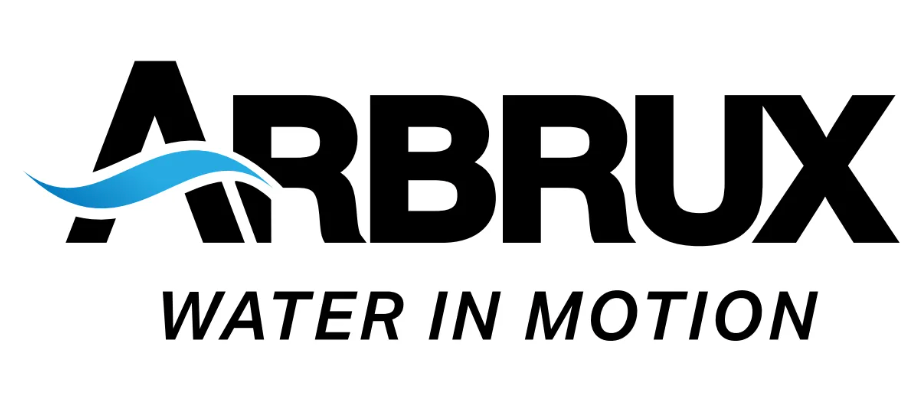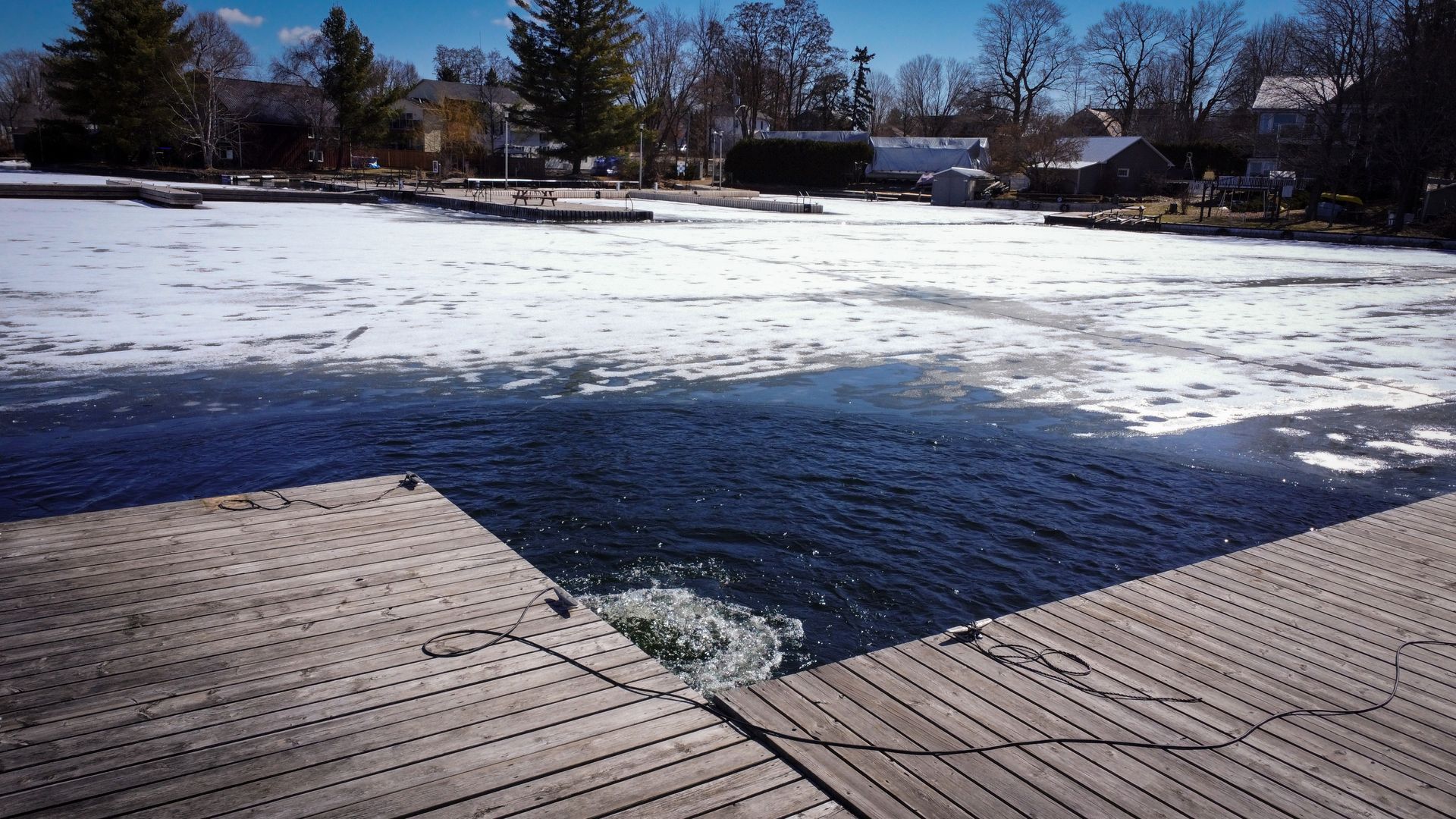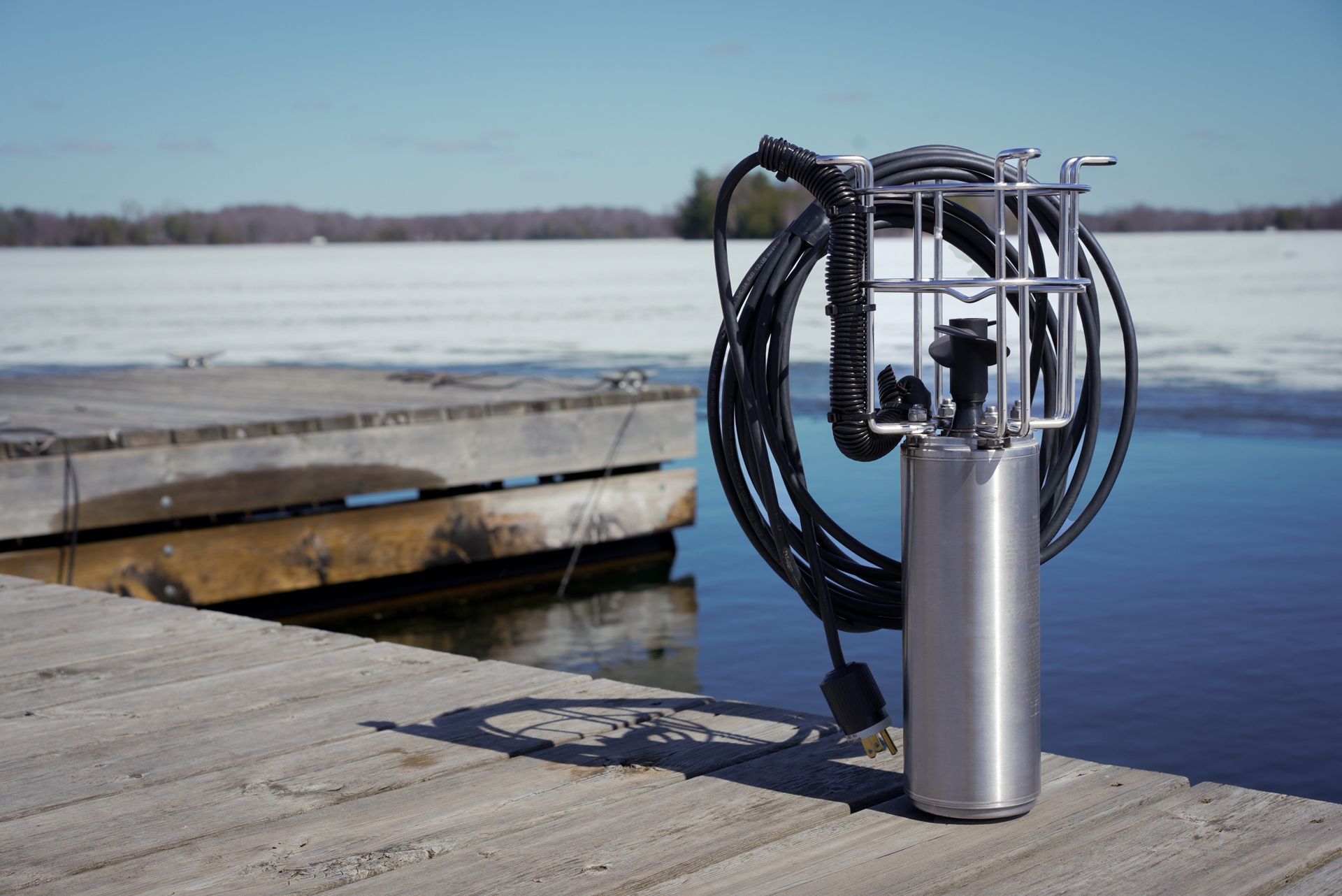Do You Really Need a Dock De-Icer? A Guide for Canadian & Cottage Country Waterfronts
If you own a waterfront property in Ontario or Canadian cottage country, you have probably heard neighbours talk about
dock de-icers,
bubblers, or “keeping a hole open” in the ice. But do you actually need one on your lakefront?
The answer depends on
where you are, what kind of dock you have, and how you use your waterfront in winter. This guide walks through the key questions to ask if you are on lakes like
Muskoka, Kawartha Lakes, Lake Simcoe, Georgian Bay, Rideau Lakes, and other Ontario cottage regions.
We will also look at how a system like the
Arbrux De-Icer fits into a broader winter dock protection plan, and what safety and legal considerations you should keep in mind.
What a Dock De-Icer Actually Does
A dock de-icer does not “melt” ice or heat the lake. Instead, a propeller-style unit like the
Arbrux De-Icer pulls
slightly warmer water from deeper below the surface and circulates it upward around your structure.
That steady movement of water helps to:
- Keep ice from forming, or keep it much thinner, near your dock or boat lift
- Reduce the pressure of expanding and shifting ice on key structural points
- Lower the risk of your dock, piles or lift getting locked into thick ice
In many Ontario lakes, the goal is not to de-ice an entire bay, but to maintain a controlled open-water or thin-ice radius around:
- Dock legs or cribbing
- Boat lifts and ramps
- Marina slips or finger docks
This is where a properly sized and positioned de-icer can make the biggest difference.
Where Is Your Waterfront Located?
Location is a big part of whether you really need a dock de-icer.
You are more likely to benefit from a de-icer if you are on:
- Larger lakes exposed to wind and drifting ice (for example, Georgian Bay or parts of Lake Simcoe)
- Narrow bays or channels where ice packs in and pushes on shore
- Sections of
Muskoka,
Kawartha Lakes,
Rideau Lakes or similar areas where water levels fluctuate and ice movement is noticeable each spring
In these regions, repeated
ice expansion, jacking, and spring break-up can gradually twist and fatigue docks, even if the damage is not obvious after a single season.
At the same time, national and provincial organizations consistently remind people that no ice is ever completely safe. For general background on ice conditions and risk, it is worth reviewing resources such as:
- Ice Safety: Know when it’s safe to play – Canadian Red Cross
- Ice Safety – Canadian Coast Guard
- Ice safety: 3 steps that could save your life – Destination Ontario
These do not talk about de-icers specifically, but they are important context for any decision that involves intentionally creating open water.
What Type of Dock Do You Have?
Different dock types face different levels of risk in Ontario winters.
You are more likely to need a de-icer if you have:
- A fixed or permanent dock on piles, cribs, or concrete
- A boat lift that is designed to stay in year-round
- A larger or complex dock system that is not realistic to remove each fall
You may be less likely to need a de-icer if:
- You have a lightweight floating dock that you fully remove from the water before freeze-up
- Your dock is in very shallow, sheltered water and is easy to pull or pivot out each season
Even then, many fixed or semi-permanent docks in Ontario experience gradual damage over time from ice jacking and movement. For owners who plan to keep a structure in the water long term, using a de-icer can be part of a broader “dock life extension” strategy.
How Do You Use Your Property in Winter?
Your own habits and risk tolerance matter as much as your dock design.
A dock de-icer is more likely to make sense if:
- You visit your cottage in winter and want your dock and lift to be ready for early spring use
- You rely on a permanent dock for year-round access or marina operations
- You have invested in a higher-end dock or lift system and want to protect that investment
On the other hand, if:
- You close the cottage completely in October
- Your dock is simple and inexpensive to repair or replace
- You are comfortable accepting some seasonal damage over time
…then you may decide that pulling the dock, or simply repairing as needed, is acceptable.
What Are Your Local Rules and Expectations?
In Ontario,
local municipalities and lake associations are increasingly paying attention to systems that create open water in winter, including de-icers and bubblers.
The Federation of Ontario Cottagers’ Associations (FOCA) notes that bubblers and other de-icing systems can create hazardous thin ice or open water, and that there may be bylaws or expectations around their use. Their resources on ice safety and changes and the “Bubblers – Safety Considerations” information sheet are useful reading if you are in cottage country.
Before installing a de-icer, it is wise to:
- Check with your local municipality to see if there are any specific bylaws
- Ask your lake or road association if there are guidelines or informal expectations
- Consider how your system might affect neighbours who snowmobile, skate, or fish near your shoreline
The overarching message from groups like FOCA and safety organizations is clear: if you create open water, you have a responsibility to mark it and use the equipment responsibly.
When You Probably Do Need a Dock De-Icer in Ontario
You are a strong candidate for a dock de-icer if most of these statements apply:
- Your property is on a larger or exposed lake (for example, Georgian Bay, Lake Simcoe, parts of Muskoka or Kawartha Lakes)
- You leave a permanent or semi-permanent dock in the water year-round
- You have a boat lift that is not practical to remove
- You have already seen signs of winter damage: twisted legs, shifted sections, repeated repairs
- You want to protect a significant investment in your dock and lift
- Your municipality permits de-icers and you are prepared to sign and mark the area properly
In these cases, a unit like the Arbrux De-Icer, paired with the right mounting system (for example, a dock mount or lake bottom mount), can be one of the most cost-effective ways to reduce damage from Ontario winters.
Choosing the Right De-Icer for Your Cottage Country Waterfront
If you decide a de-icer makes sense for your property, your next step is choosing a unit and mounting system that matches your conditions:
- Radius and depth: How much open water do you actually need, and how deep is the water where your dock or lift sits?
- Mounting style: Do you need a dock mount attached directly to your structure, or a lake bottom mount where there is no dock?
- Bundle options: Would a complete package, such as a dock or lake-bottom bundle, simplify setup?
You can explore specifications and options for the de-icer itself on the Arbrux De-Icer product page, and build from there based on your lake depth and dock style.
The Bottom Line: Do You Really Need a Dock De-Icer?
There is no one-size-fits-all answer. But as a general guide for
Ontario and cottage country waterfronts:
- If you leave a permanent dock and lift in on a lake known for strong ice movement or fluctuating levels, a de-icer is often a smart investment.
- If you have a simple removable dock on a small, sheltered lake, you may be able to continue pulling it each fall without needing de-icing equipment.
Either way, understanding your location, dock type, local rules and risk tolerance will help you make the right decision for your shoreline.To learn more about how a de-icer can fit into your winter dock protection plan, visit the
Arbrux De-Icer product page.






